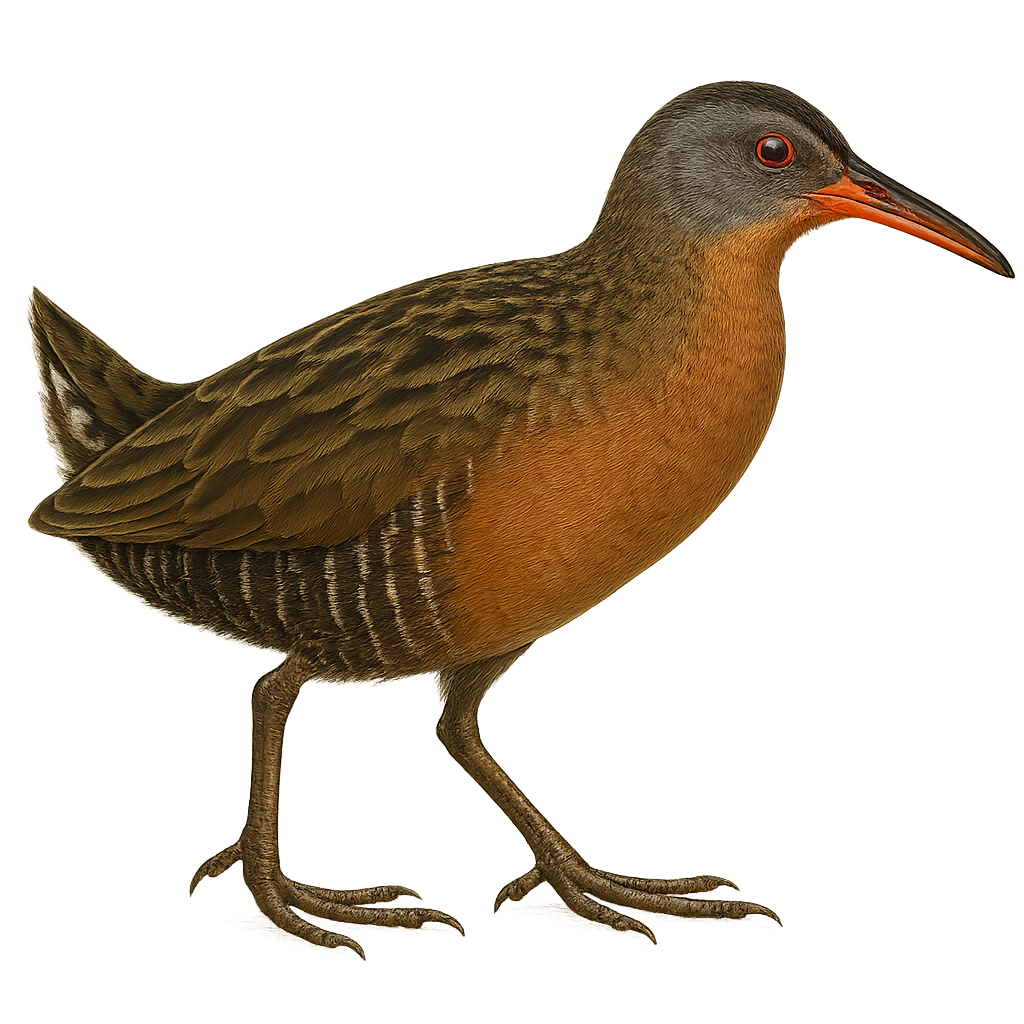Your wildlife photography guide.
Explore the virginia rail in detail, study its behavior, prepare your shots.
Where to observe and photograph the virginia rail in the wild
Learn where and when to spot the virginia rail in the wild, how to identify the species based on distinctive features, and what natural environments it inhabits. The WildlifePhotographer app offers tailored photography tips that reflect the virginia rail’s behavior, helping you capture better wildlife images. Explore the full species profile for key information including description, habitat, active periods, and approach techniques.
Virginia Rail
Scientific name: Rallus limicola

IUCN Status: Least Concern
Family: RALLIDAE
Group: Birds
Sensitivity to human approach: Suspicious
Minimum approach distance: 10 m
Courtship display: April to May
Incubation: 18-20 jours
Hatchings: April to June
Habitat:
Marshes, wetlands, reeds
Activity period :
Active at dawn and dusk, ideal moments for observation.
Identification and description:
The Virginia Rail is a medium-sized waterbird, measuring about 20 to 27 cm in length. It is recognizable by its reddish-brown plumage on the back and wings, and its gray belly. Its long, slightly curved bill is perfect for probing mud in search of food. This bird prefers marshes and wetlands where it can hide among the reeds. It is often heard rather than seen due to its secretive behavior and dense habitat. The Virginia Rail primarily feeds on insects, small crustaceans, and seeds. It is known for its distinctive calls, often described as repeated "kik-kik-kik" sounds.
Recommended lens:
400mm – adjust based on distance, desired framing (portrait or habitat), and approach conditions.
Photography tips:
To photograph the Virginia Rail, it is advisable to use a telephoto lens of at least 400mm to capture detailed images from a distance, as this bird is suspicious and prefers to stay hidden. The best opportunities to photograph it are early in the morning or late in the afternoon when the bird is most active. Look for areas with dense reeds and be patient, as the Virginia Rail is often heard before it is seen. Use a tripod to stabilize your camera and wait for the bird to appear.
The WildlifePhotographer App is coming soon!
Be the first to explore the best nature spots, track rutting seasons, log your observations, and observe more wildlife.
Already 1 430 wildlife lovers subscribed worldwide

